




Arctic Region
Kids, in this section today, we all will be learning about some interesting arctic region facts. Children, which is the coldest place you have ever been to? Well, bet the arctic region is the extremest of all those coldest places any one of you can imagine. At the northernmost point of our world lies a land of ice, snow, and extreme darkness and light- The Arctic. Here strange creatures have made peculiar adaptations to the harsh conditions. Despite the bitterly cold winters, life flourishes in a short, cool summer, making this fragile ecosystem a remarkable one! Let’s read some more about this region in this article.
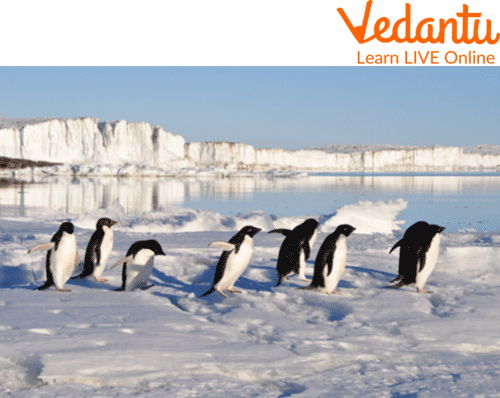
Arctic Region
Arctic Region
The arctic region is a polar region which is located at the northernmost part of the earth. This region includes the arctic ocean, the adjacent seas, a few parts of canada, Finland, Iceland, Norway, Sweden etc.
The climate of this region can be characterised by long, cold winters and short summers. The average temperature is usually 10° C. The ground is permanently frozen, vegetation also is very low.
Arctic Region Facts
Now, let’s learn some interesting facts about the Arctic region
The arctic region gets a great deal of sunlight in summers and very less in winters because of the tilt of the earth’s axis.
As summer arrives after spring, the days become very long until there is one day when the sun does not set at all.
In winter, the days get shorter until finally, there comes a day when the sun does not rise at all. On this day, the darkness lasts for a full 24 hours. This is called Polar Night.
The polar night may be long, but there is a light in the darkness called aurora. The Aurora Borealis, or Northern Lights, is a display of lights in the night sky that is only visible near the north pole. In skies surrounding the south pole, auroras are called Southern Lights.
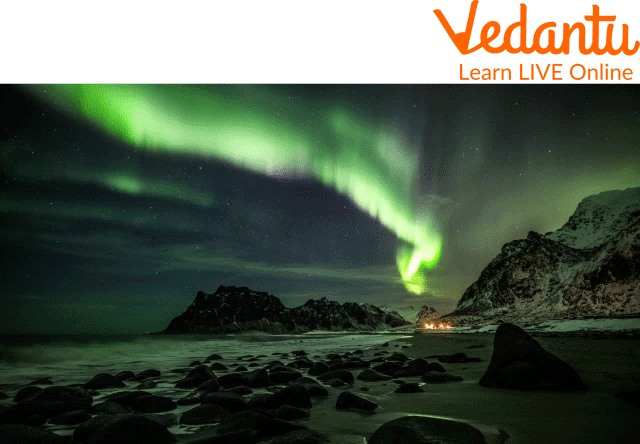
The Northern Lights
The auroras are caused by the charged particles from the sun that interact with Earth’s magnetism, exciting the gases of the atmosphere as it glows.
Arctic Ocean Facts
Let’s learn some interesting facts about the Arctic ocean:
The Arctic Ocean is surrounded by Norway, Russia, Greenland, Island, Canada, and the United States of America.
The Arctic is an ocean surrounded by land and situated in the northern hemisphere of the earth.
The Arctic has polar bears but no penguins, unlike The Antarctic, where there are penguins but no polar bears.
The Arctic Ocean is a vast ice-covered ocean surrounded by treeless permafrost.
Among the world's five oceans, the Arctic is one of the smallest and shallowest oceans. The Arctic Ocean is also the coldest and the least salty ocean.
It is almost the same size as Russia and is bigger than the whole European continent. But being the smallest ocean, it is 10 times smaller than the Pacific ocean.
The average depth of the Arctic Ocean is about 1000 metres which are 3280 feet.
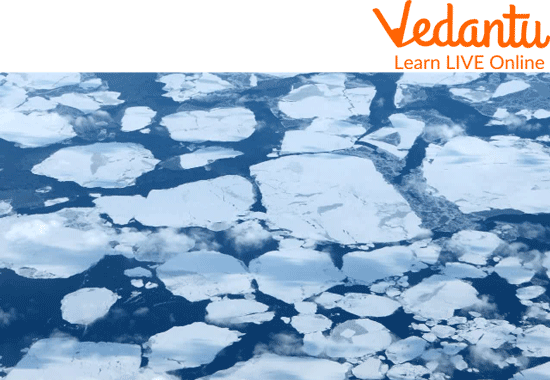
The Arctic Ocean
Facts About Arctic Animals
The Arctic region is home to a wide variety of animals. Some of these animals include polar bears, arctic terns, arctic foxes, arctic seals, etc. Let's talk about some of the interesting and amazing animals living in the Arctic region.
1. The Arctic Fox
Some arctic fox facts:
The Arctic fox, also known as the white fox or snow fox, is a species of fox native to the Arctic regions of the Northern Hemisphere.
They are well adapted to living in cold environments and are best known for their warm, thick fur, also used as camouflage.
In the wild, most arctic foxes do not live past their first year, but some exceptional ones survive up to more than ten years.
An average arctic fox’s body length ranges from 46 to 68 cm, with a generally rounded body shape to minimise heat escape.
The Arctic fox preys on many small creatures such as waterfowl, lemmings, voles, fish, ringed seal pups, and seabirds. It also eats berries, seaweed, carrion, insects, and other small invertebrates.
Arctic foxes, during the breeding season, form monogamous pairs, and they stay together to raise their offspring in underground dens.
The natural predators of the Arctic fox are wolverines, red foxes, golden eagles, polar bears, grizzly bears, and wolves.
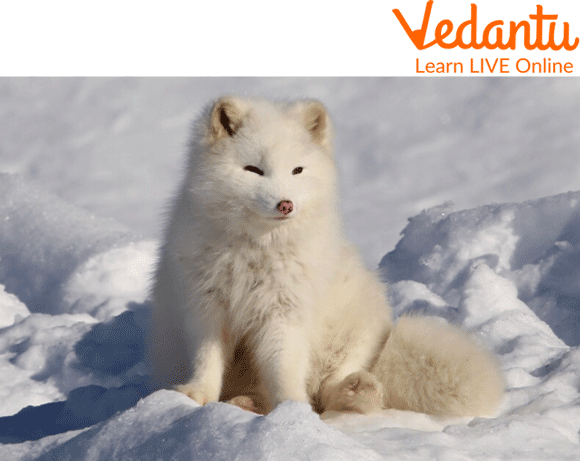
Arctic Fox
2. The Arctic Seal
Some arctic seal facts:
Harp seals are found in the region of the arctic ocean and are born at a minus four degrees Fahrenheit temperature.
These arctic seals are sleek swimmers and prefer to stay more in water and less on the land.
Harp seals are big travel lovers. They travel around four thousand miles every year.
The mother arctic seal can identify her children in a group of hundreds by their smells.
These harp seals are capable of producing more than 15 types of vocalisations on land as well as underwater.
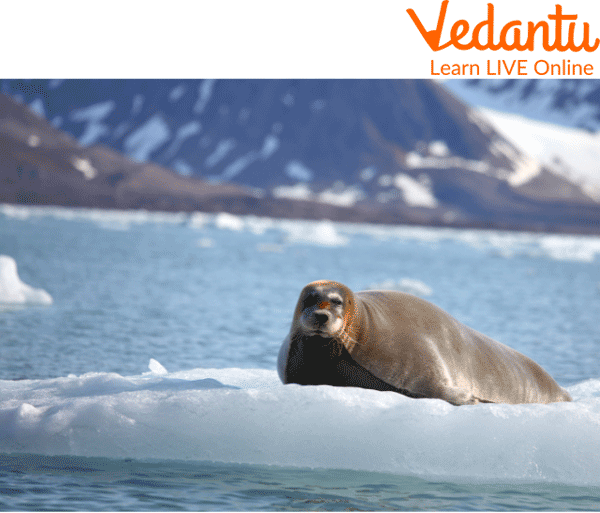
An Arctic Harp Seal
3. The Arctic Tern
Some arctic tern migration facts:
Arctic terns are considered to have the longest migration of all the animals on the earth. In a single year, an arctic tern travels from its breeding grounds in the arctic which comprises Siberian and northern European islands and peninsulas, northern parts of North America.
On an average year, an arctic tern travels a distance of approximately 80467 km or 50,000 miles.
A global migration means arctic tern follows summer around the planet. Thus they are considered the animals who see the most sunlight.
Arctic terns are monogamous birds throughout their life and follow courtships very religiously.
Potential predators of these birds are rats, foxes, minks, and sea birds like skuas.

An Arctic Tern
Summary
The Arctic is one of the most remote and beautiful places on earth. The Arctic is also called the land of the midnight sun. Because the arctic climate is so unwelcoming to humans, much of it has gone untouched and undeveloped. But humans still somehow manage to disturb the delicate balance these creatures depend upon. Pollution, hunting, and gathering resources may cause changes that upset the network supporting life in the arctic region. We read about the polar arctic region and its wildlife in this article. We discussed the arctic fox facts, seal and tern one by one. We hope this article is beneficial for you, in case of any other doubts feel free to ask in the comments.
FAQs on Facts About Arctic Region
1. What has caused the shrinking of the arctic region?
Global warming has led to the shrinking of the arctic region. The rising temperature of the earth has led to the melting of glaciers present in the arctic.
2. The name Arctic has derived from which word?
The word is derived from the Greek word arktos, which means "bear" and refers to the constellation of the Bear in the north.
3. Can plants grow in the arctic region?
Vegetation is usually very low in the arctic region. Plants can grow in this region but only a particular variety can grow here. For example Mosses, lichens, small shrubs, and various herbs can grow in the warmer parts of the arctic region.
4. What is the warmest temperature recorded in the arctic ocean?
The World Meteorological department has recorded the warmest temperature in the arctic to be 38-degree celsius.









